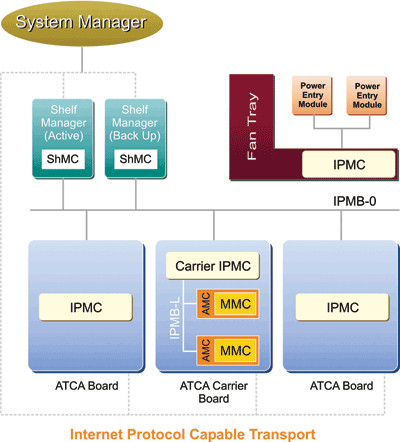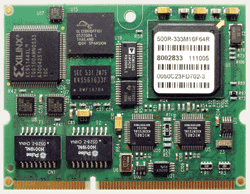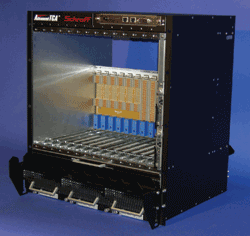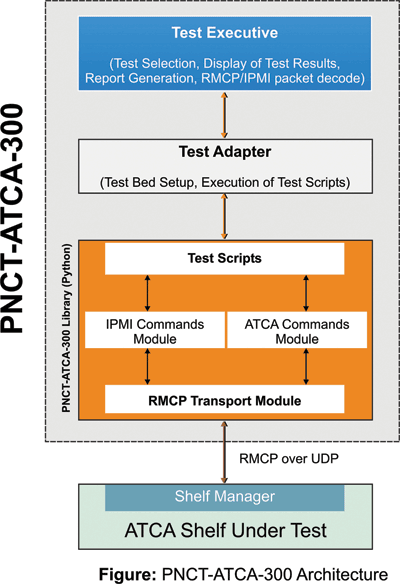Testing requirements for AdvancedTCA platforms
Testing for compatibility and interoperability helps eliminate the problems system integrators and service providers encounter
BY POULOMI ROY
Business Development Manager
Polaris Networks
Lexington, MA
http://www.polarisnetworks.net
and NIRLAY KUNDU
CP-TA Technical Work Group Chair
Communications Platforms Trade Association
Beaverton, OR
http://www.cp-ta.org
To serve as a carrier-grade common platform for a wide range of applications, a communications platform has to meet certain industry demands. For one, it has to be an open, interoperable, standards-based platform, so that products from different vendors can be intermingled in the development and integration of standardized equipment. It also has to be flexible and should be ready for customization. And, since it is used in several critical systems, it should have high availability (an up-time of 99.999% or better).
Network equipment providers are tasked with delivering new platforms or customized platforms for new applications, improving productivity, and reducing capital and operating expenses. This ever-increasing service complexity places a lot of pressure on network capacity, making a standard open platform like Advanced Telecommunications Computing Architecture (ATCA) an absolute requirement due to its capability of carrying multiple services while allowing a lower investment for network upgrades (see Fig. 1 ). It also offers powerful computing capabilities along with high availability, high reliability, and a strong vendor ecosystem.



Fig. 1. Designed to provide flexibility with high availability and reliability, the basic ATCA platform architecture (a) uses a shelf manager (b), and ATCA Shelf (a 14-slot version of which is shown in (c), and other elements available form multiple vendors, all of which need to be tested.
Testing ATCA products
Testing of ATCA products is an absolute requirement for achieving compatibility and interoperability in order to help eliminate the problems that system integrators and service providers may face while integrating components from multiple vendors. Hardware manufacturers, system integrators and telecom equipment manufacturers should test ATCA building blocks independently, as well as after integration, prior to releasing commercial off-the-shelf (COTS) products to the market.
The PCI Industrial Computer Manufacturers Group (PICMG) has defined all of the electrical and mechanical specifications of an ATCA system. PICMG has also thoroughly defined the manageability aspects of an ATCA system covering all Intelligent Platform Management Interface (IPMI) commands and messaging.
A separate but related organization, the Communications Platform Trade Association (CP-TA), is comprised of companies dedicated to accelerating the adoption of open specification-based communications platforms through interoperability compliance guidelines and member advocacy. The mission of CP-TA is to drive the market expansion of open specification-based communications platforms by actively cultivating a global ecosystem that delivers interoperable products.
As such, CP-TA has developed the Interoperability Compliance Document (ICD) which defines a set of interoperability requirements for building blocks needed to build modular communications infrastructure platforms based on the ATCA open specification by PICMG. CP-TA has also developed the Test Procedure Manual (TPM) which provides test procedures for the requirements specified in the ICD, and has introduced a self-testing program for ATCA interoperability that focuses on two main areas: thermal testing and manageability testing.
Thermal testing
During the last three years, CP-TA’s Thermal Task Force has developed significant experience in the application of thermo-anemometer sensors to generate cooling measurements. The initial design was based on utilizing “12+3” fixed position anemometer sensors in Front+RTM cards. The following issues were found:
Anemometer sensors can be successfully calibrated to meet the stated accuracy specification over the flow range of 8 to 50 CFMs for the FULL SLOT airflow flow.Anemometer sensors cannot be used (at least without replication and adding sensors and mechanical structures) to determine the direction of the airflow.Anemometer sensors are very sensitive to the placement in terms of the exact sensor height (very problematic due to extremely constrained duct “height” geometry) and position with respect to obstructions (even those caused by the sensor bodies themselves, as well as near walls).Anemometer sensors cannot be reliably used to determine the quartile flow, at least without having physical barriers between quartiles (and possibly more sensors).Flow straighteners help a little bit, but a flow profile reading that is consistent with expectations in a straight duct configuration in controlled wind-tunnel configurations has not been obtained so far in any sensor configuration, with or without straighteners.
Based on this experience, CP-TA concluded that measurement of flow using static pressure drops over sets of known impedances would be a workable approach. Such an approach would allow the overall flow direction to be easily determined using differential pressure sensors that could support measurement of “slot PQ curves,” as originally required by PICMG.
Manageability testing
Manageability testing is the process of determining whether a shelf manager (ShMC) is managing other parts of the ATCA system properly, whether power distribution is sufficient, and whether corrective actions are being taken by the ShMC in case of problems. Manageability testing also ensures that the ShMC is controlling the fan speeds of fan trays appropriately when ATCA boards report that they have reached a critical threshold temperature.
Manageability testing involves reading sensor event logs and sensor data records and monitoring the behavior of different sensors in different events. Reading and analyzing Field Replaceable Unit (FRU) information and coherent management of auxiliary FRUs is also an integral part of manageability testing.
The latest PICMG specification on which ATCA Testing is done is PICMG 3.0 Rev 3.0. One important motivation for creating R3.0 was to provide a clear and enumerated requirements reference. Compared to R2.0, R3.0 imposes very few requirements; R2.0 had introduced many new requirements and functions as well as clarifications to interoperability issues that had shown up and were discussed in implementation practice.
For example, some of the new commands, sensors, and FRU records introduced by R3.0 are:
“Get Telco Alarm Capability”, “Set/Get Telco Alarm State” and “Get Telco Alarm Location” commands.“Telco Alarm Input” sensor type.“Set FRU Extracted” command.“LED Descriptor” and “PICMG Form Factor Information” records.
Test automation
ATCA’s flexible architecture makes choosing building blocks from a variety of vendors relatively easy, but it is very important for system integrators to conduct acceptance testing through a benchmark tool in order to establish seamless integration in various platforms. By using the CP-TA ICD and TPM in conjunction with a CP-TA authorized test tool, companies can save time and money by detecting problems early in the development cycle.


Fig. 2. An ATCA manageability tester such as one from Polaris Networks ATCA manageability tester (a) employs an architecture (b) designed to adapt to the needs of a highly flexible DUT.
The ATCA manageability tester (see Fig. 2 ) is designed for hardware manufacturers, system integrators, and network equipment providers who wish to reduce the time and resources spent on ATCA, AMC, and HPM testing during the development and qualification of building blocks or during system integration. It helps with increased interoperability of building-blocks, decreased development and integration time, and compliance with CP-TA’s ATCA certification guidelines.
The ATCA Tester provides interactive monitoring of an ATCA shelf for observing the information of IPMCs including sensors, FRU, e-keying, and more. It provides detailed test results with a complete decode of Intelligent Platform Management Interface (IPMI) and Remote Management Control Protocol (RMCP) commands, and tests can be scheduled for a desired number of iterations and even for future execution. ■
Advertisement
Learn more about Communications Platforms Trade AssociationPolaris Networks





